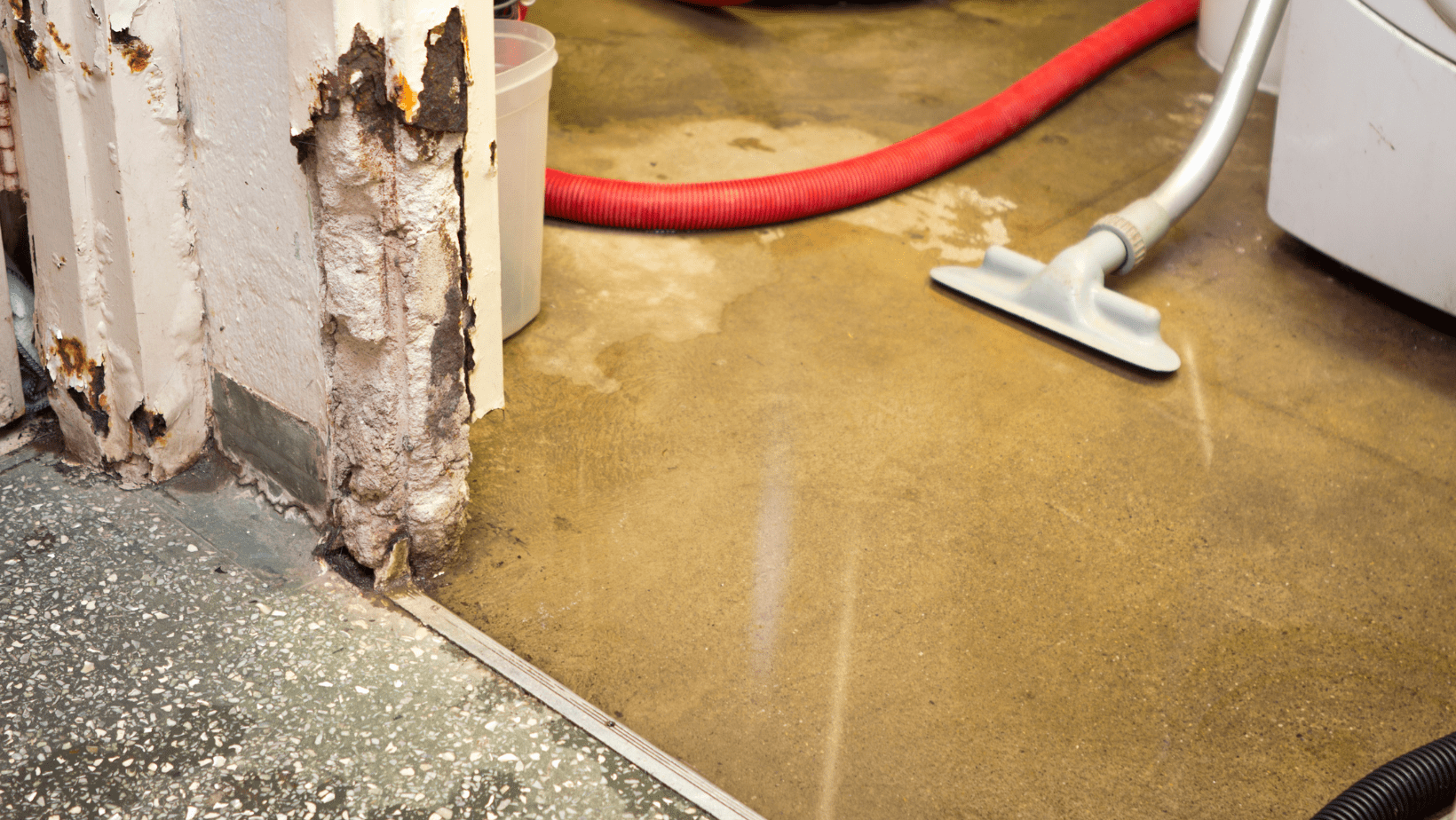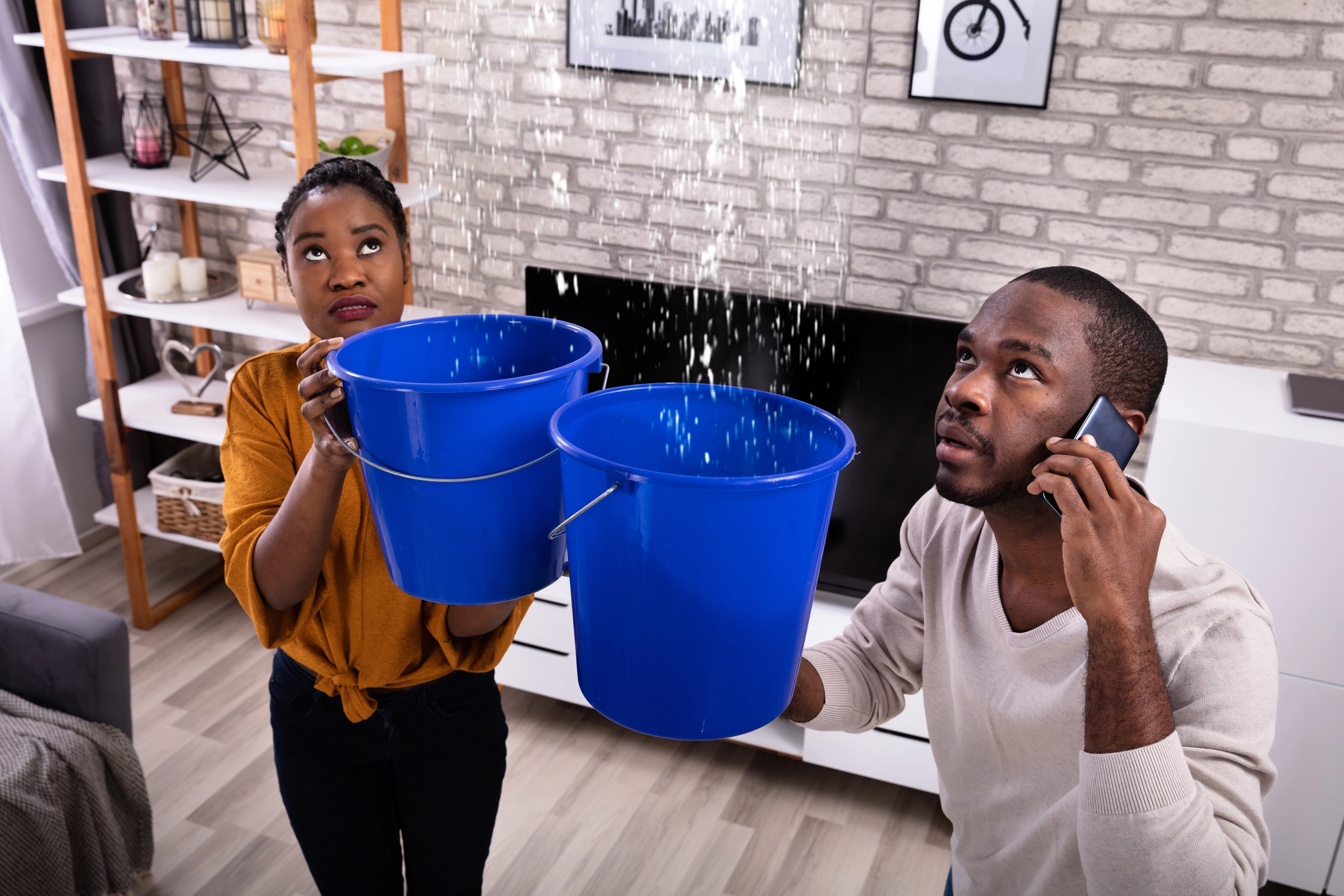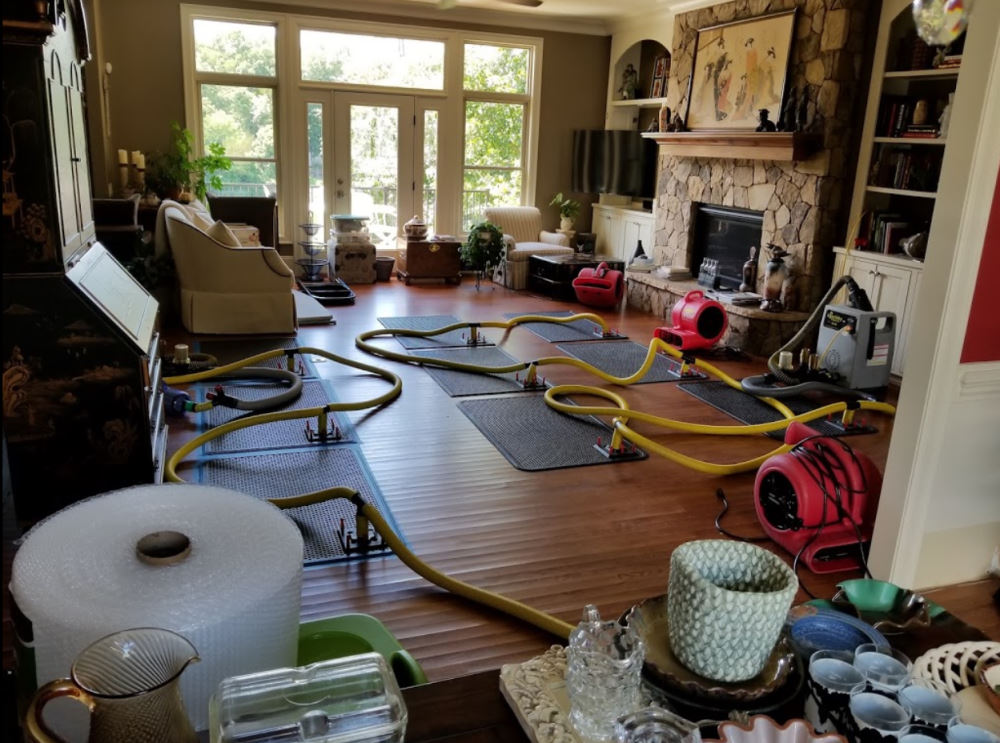How Water Damage Repair Prevents Long-Term Structural Failure
Wiki Article
Necessary Actions to Adhere To for Effective Water Damage Repair in your house
When encountered with water damage in your home, knowing the important actions for reliable reconstruction can make all the distinction. You need to assess the damage and assurance safety before tackling the problem. Stopping the source of water is necessary, yet it's simply the beginning. When you've handled that, there's a collection of actions you need to take to safeguard your residential property from more concerns. Allow's explore what you ought to do next.Analyze the Damages
The first action is to evaluate the damages completely when you find water damages in your home. Beginning by identifying the resource of the water breach. Examine for leaks, ruptured pipes, or other concerns triggering the problem. Next off, take a look at the impacted locations for visible signs of damages, including staining, warping, or mold and mildew development. Do not forget to look in covert places like behind walls or under floor covering, as water can seep right into these locations unnoticed.Document the damages by taking clear photos and notes. This will certainly help you when reviewing the circumstance with your insurance policy provider or repair experts. Focus on the sort of products influenced, as different materials need various restoration methods. Ultimately, evaluate the degree of the damage. Is it substantial or small? Understanding the extent will guide you in choosing whether to manage it yourself or call the experts for a much more substantial reconstruction procedure.
Guarantee Safety and security
Before you start any kind of restoration job, assuring your security is crucial. First, examine the condition of your home. If the water's deep or if you observe electric risks, don't get in the area. Shut off the power and gas supply to stop mishaps. Wear safety gear like masks, handwear covers, and boots to secure yourself from impurities or mold.It's important to stay knowledgeable about your environments; expect unsafe surface areas and sharp things. Treat it as hazardous waste if the water is from a sewage backup. Maintain animals and kids away from impacted areas to prevent exposure.Once you've taken these precautions, you can wage the remediation process. Bear in mind, your safety precedes, and if you're ever before unclear, it's best to seek advice from a specialist. Taking these actions will help assure you're prepared to deal with the remediation securely and properly.Quit the Source of Water
After ensuring your safety, the following step is to stop the source of water. Determine where the leakage is coming from. It could be a ruptured pipeline, a malfunctioning appliance, or also heavy rain going into via a damaged roofing system. If it's a pipes concern, shut off the main supply of water to your home to avoid further flooding. For devices, unplug them and shut down their water system valves.If the source is outdoors, like rainwater, attempt to divert it away from your home making use of sandbags or other barriers. For small leaks, you could be able to utilize tape or a sealer temporarily till a professional can repair it. Bear in mind, attending to the resource rapidly is vital to reducing damages and preventing mold and mildew development. Once you've quit the water, you'll be in a better position to go on to the next steps in the reconstruction process.
Get Rid Of Excess Water
Act swiftly to eliminate excess water, as standing water can lead to extra substantial damage and mold and mildew growth. Gather your devices: a wet/dry vacuum, pails, and towels. You can make use of towels to saturate up the dampness if the water is superficial. For deeper water, a wet/dry vacuum cleaner is your best choice. Make sure to clear the vacuum cleaner often to stay clear of overflow.If the water is polluted, like from a sewer backup, use safety gear, consisting of handwear covers and masks, to keep on your own secure. Once you have actually gotten rid of as much water as possible, look for hidden pockets of wetness in corners and under furniture, as these can nurture mold.Don' t neglect to switch off electrical devices and power outlets in wet areas to avoid hazards. This first step is important in decreasing damages and setting the phase for an effective restoration process.Dry and Dehumidify the Area
It's vital to dry and evaporate the location completely when you have actually gotten rid of the excess water. Begin by utilizing dehumidifiers properly to draw dampness out of the air and prevent mold development. Maintain an eye on moisture degrees to assure the room dries out entirely.Get Rid Of Standing Water
To properly take on water damages, you require to concentrate on removing standing water as promptly as feasible. Start by gathering required tools, like a wet/dry vacuum or a pump, depending on the quantity of water. If the water is shallow, more info a vacuum should suffice. For larger quantities, a pump is extra efficient. While functioning, make certain to use protective equipment to maintain yourself secure from impurities. As you eliminate the water, take note of hidden locations like under furniture or in corners where water could gather. Your room will begin to dry out as soon as you've removed the bulk. This action is necessary, as lingering water can lead to mold development and more extensive damages.Usage Dehumidifiers Successfully
How can you effectively make use of dehumidifiers to dry and evaporate your space? Begin by putting your dehumidifier in one of the most afflicted location, ideally where water damages is most severe. Ensure to close all windows and doors to produce a sealed atmosphere. Activate the dehumidifier and set it to the proper moisture level, generally around 30-50%. Empty the water collection tank often, or think about utilizing a version with a continuous drain alternative for convenience. Preferably, use fans to improve air flow, aiding the dehumidifier work much more effectively. Keep the dehumidifier running until you're confident that the area is extensively dried out, stopping mold and mildew development and additional damage (Flood Damage Restoration). This action is crucial for efficient water damages reconstructionMonitor Humidity Levels
Monitoring humidity levels is vital throughout the drying procedure, as it assists ensure your area continues to be totally free from excess wetness. Purchase a trusted hygrometer to track humidity properly. Preferably, you desire to keep degrees between 30% and 50%. If humidity readings rise above this range, you might require to readjust your dehumidifiers or followers to improve air flow. Examine the readings regularly, specifically in locations vulnerable to moisture, like basements or shower rooms. If you notice relentless high humidity, take into consideration boosting ventilation or utilizing additional dehumidifiers. Remaining on top of these degrees not only speeds up the drying out process but additionally avoids mold growth, ensuring your home keeps safe and comfy.Tidy and Disinfect Affected Surfaces

Restore and Fix Your Home
After cleansing and disinfecting the influenced areas, it's time to recover and fix your home. Begin by evaluating the damages. Inspect for structural issues, like damaged walls or floors, and attend to any kind of essential repair work. Replacing damaged drywall or flooring is necessary for both aesthetic appeals and safety.If your furnishings or items were influenced, consider whether they can be salvaged or need replacement. Clean or expertly restore items where possible.Next, touch and repaint walls up any areas that need focus. This not just boosts appearance but likewise safeguards surfaces from future water damage.Don' t forget to inspect your plumbing and home appliances for leaks, guaranteeing every little thing's functioning properly. Lastly, think about installing a dehumidifier to avoid future wetness problems. By taking these actions, you'll restore your home to its previous glory and produce a more secure living setting.Frequently Asked Concerns
For How Long Does Water Damage Reconstruction Generally Take?
Water damages reconstruction normally takes anywhere from a few days to numerous weeks, depending upon the extent of the damages (Water Damage Cleanup). You'll intend to examine the situation quickly to decrease more complications and ensure proper repairWill My Insurance Cover Water Damages Remediation Prices?
Your insurance may cover water damages remediation prices, but it depends upon your plan. Examine your insurance coverage information and contact your insurance coverage representative to clarify what's included and what you need to file a case.
Can I Handle Water Damage Repair Myself?
You can manage water damages reconstruction yourself, yet it's essential to analyze the scenario. If it's comprehensive, you could intend to call specialists. Constantly prioritize safety and assure you have actually got the right tools.What Are the Indications of Hidden Water Damage?
You might discover signs of covert water damage like distorted walls, moldy odors, or staining. If your floorings really feel mushy or you area mold, it's time to examine even more before the situation aggravates.Just How Can I Avoid Future Water Damages in My Home?
To stop future water damage in your house, you should consistently examine pipes, seal fractures, maintain seamless gutters, and guarantee correct drainage. Setting up a sump pump and dampness barriers can likewise help keep your room dry. When you discover water damages in your home, the very first step is to examine the damage completely. Act quickly to remove excess water, as standing water can lead to extra extensive damage and mold and mildew growth. To successfully take on water damage, you need to concentrate on getting rid of standing water as swiftly as possible. As you remove the water, pay interest to concealed locations like under furnishings or in edges where water might collect. Water damage repair generally takes anywhere from a few days to a number of weeks, depending on the degree of the damages.Report this wiki page